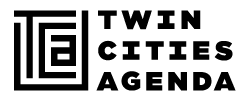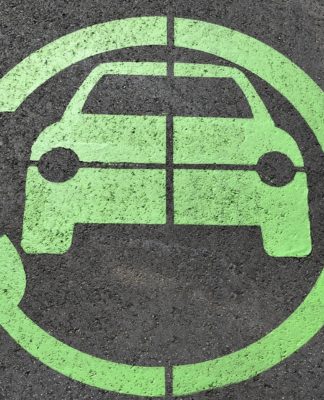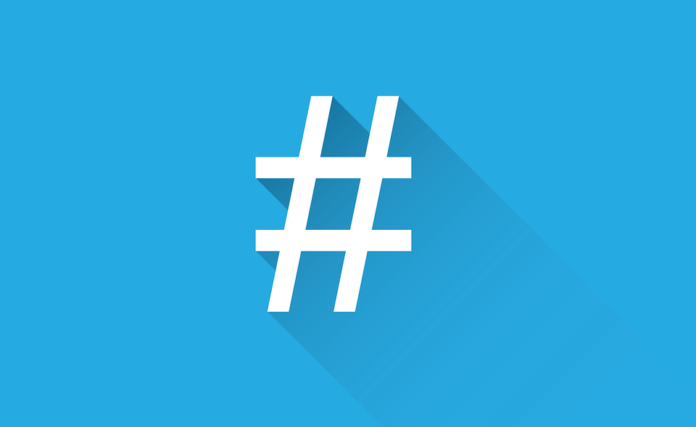
A poll conducted online by Harris between 12/19 and 12/21 of last year surveyed 2,160 adults in the U.S. to find out which social media platforms are the most loved, and most hated.
Note: The poll was weighted to represent the whole of the population.
The red in the following graph, published originally on Recode, represents the sites that people found generally unfavorable: The “Kill it and hope it dies” section. Twitter ranked the highest of these, with 46%, which isn’t surprising given that they have struggled with harassment and abuse of users, and incendiary language from one particularly prominent user, @realDonaldTrump.
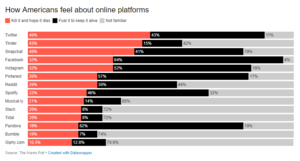
Wait, Forbes made a much prettier graphic using the original graph; more colorful and interactive. Let’s look at that one instead:
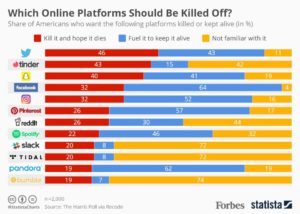
What is perhaps more telling than the platforms that users wish would disappear are those that they want to support: While 32% want to “kill” Facebook, a whopping 64% want the platform to stick around. Facebook also had the lowest “Not familiar” percentage.
Facebook has some 2 billion active users, which is just under a third of the entire world population, and dwarfs Twitter’s 330 million. Favorable ratings are often hard to come by from fickle internet-users, and so is usage in general, so Facebook is clearly doing something right simply by getting people on board.
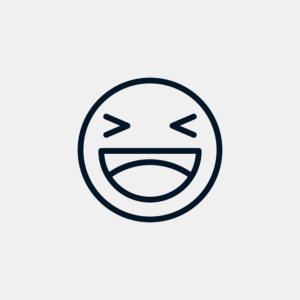 Social media is life
Social media is life
With as many people using these platforms as there are, it’s also safe to say that the user experience will certainly be influenced by what’s going on in personal lives’ outside of the glowing screens and social media fishbowl.
A user who is sending goofy pictures over Snapchat will have a much easier time enjoying that platform given it’s more innocent strategy; there isn’t much room for argument or strife while sending pics of yourself with dog ears (though, that isn’t to say it hasn’t happened).
That is to say, the average person is much easier to please on Snapchat than the lonely bachelor/bachelorette who hasn’t yet found love on Tinder, or, worse, has faced harassment or aggressive, inappropriate advances.
Facebook’s success lies perhaps in their ability to please the worker who gets all of their news from the site, the grandmother living in Utah who uses it to keep in touch with grandchildren in Maine, the friend who wants to plan a party, etc. all at once.
The more grand the ambition, the greater the potential for success? And for failure?
At least more good/bad experiences to offset negative/positive ratings. The function itself then lies at the root of these reactions, sort of a Marshall McLuhan-esque, “The (social) media is the message.”
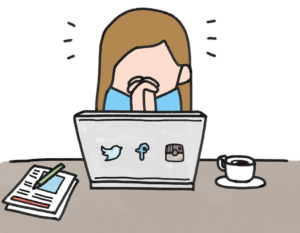
High numbers of users will of course, by simple percentage points, make a platform’s likability more volatile, hence the Facebook spread, for example. But it is ultimately what they do for people, and how people use them, that will dictate how often they come back.
A streaming music site like Pandora, which, as long as they keep playing (algorithm-based) songs their users like, will continue to enjoy favorable ratings (62%).
Conversely, Spotify, which offers a similar service, saw a much lower “keep” rate, which might have something to do with the fact that they offer a fairly limited (poor) user experience unless you pay.
And the platforms users simply haven’t discovered; more niche-based platforms like Slack (used solely for business), Tidal (the newest of the music-streaming sites) and Bumble (alternative to Tinder) saw both a smaller “kill” rate, and much smaller “keep” rate: For these we’ll just have to wait and see.
It does indicate how disliked (the much larger) Tinder is, as a converse to Bumble, as their 43% “kill” rate is the same as the rate of people who don’t have any experience with them, and only 15% want to keep them around.
